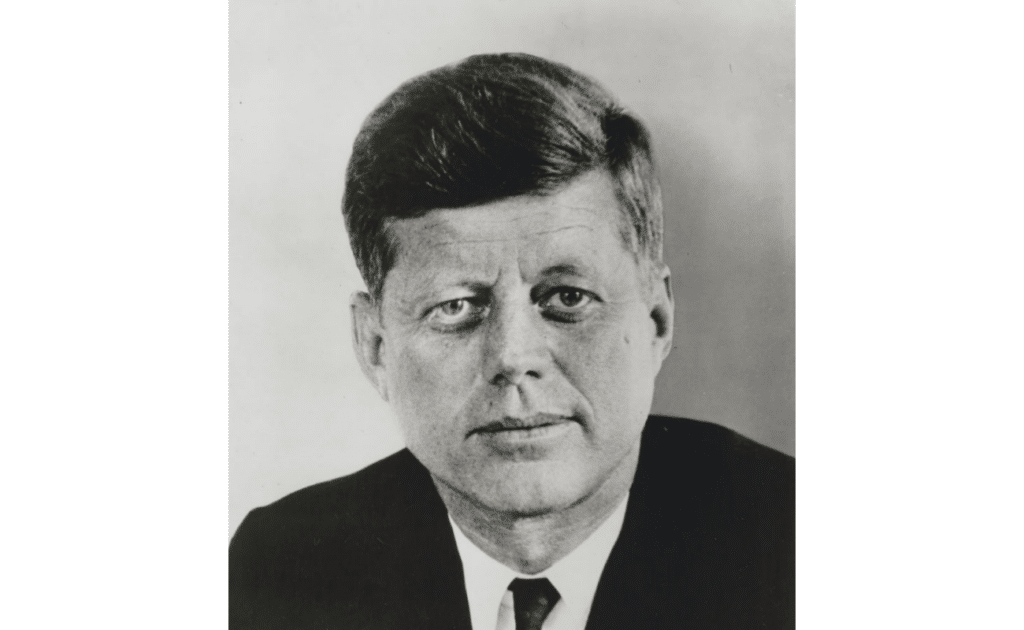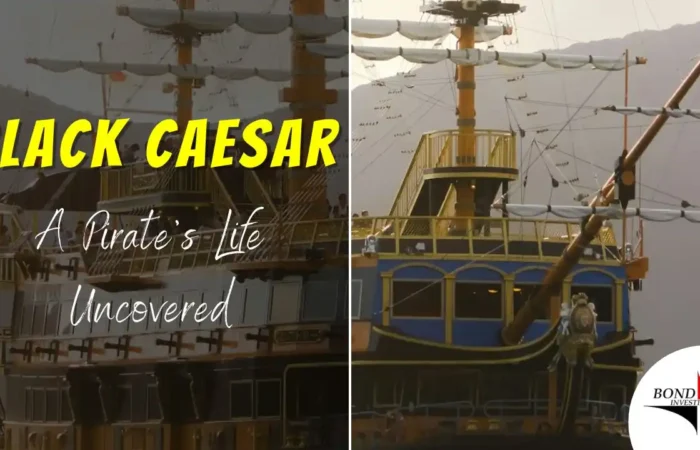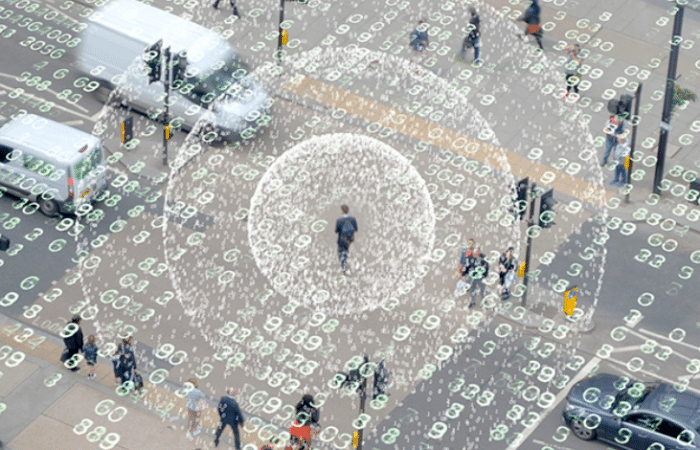
Canvassing and Clean Up
So how would the JFK shooting investigation be different if done today? Well, the most crucial moments during an investigation are the few minutes and hours after a crime. You need to gather evidence in a timely and professional manner. In an absolute panic situation where hundreds of people were frantic: people throwing themselves to the ground in fear of more gunfire coming and police and secret service descending on the victims. In this chaos it was all too easy for investigators to lose information.
For this case, investigators were extremely lucky that the shooter actually worked in the building where he took the shot from. Without a well-placed steam fitter who happened to see someone in the School Book Depository and eyewitness colleagues who noticed Oswald carrying a suspicious brown paper bag and notably missing, the investigators might not have been able to find Oswald as quickly or at all.
However, there’s no telling how much information was lost in the confusion later. In addition, the confusion led to many conspiracy theories that have cropped up around this assassination.
How it’s changed today
As a result of the aforementioned confusion, investigators today are always seeking to limit it by controlling access to crime scenes. This happens with people entering and people leaving them after the crime happens.
They lost access to information as eyewitnesses disappeared. Many of the people who were present when the shots rang out left. They didn’t stay, running and hiding instead, and going home. The confusion and lack of perimeter made it possible for people who had potentially crucial information to walk away. Thus resulting in them not receiving an interview.
- Investigators today would do this differently by having a perimeter in place immediately, if not before something occurs. Planning for these potential situations creates an actionable plan. They can then snap this into place as soon as something goes wrong to ensure they have possession of valuable eyewitness accounts.
They lost objective witness opinions in the crush of people. Of the people who were in the square after the shooting and didn’t simply walk away, 104 of them had the name “earwitnesses”. They could hear where the shots came from and how many there were.
Most earwitnesses claimed to hear 3 shots, although we later learned there were four. Opinions on where the shots came from were wildly varied. More than half said they heard three shots from the Texas School Book Depository. Others named the Grassy Knoll, which would later become the subject of conspiracy theories.
This vast incompatibility of information and lack of clarity lent itself massively to conspiracy theories. These later cropped up as the Warren Commission released details of their investigation.
Today’s investigators would do this differently because they understand the relative unreliability of eyewitness testimony. Eyewitness testimony is crucial in any investigation where it’s available. It also notoriously changes from witness to witness.
The JFK shooting investigation today would:
- Take witness statements immediately
- Not allow witnesses to leave until you take their accounts
- Gather information from more than simply eyewitnesses- including the acoustic recording they could later present as potential proof of a conspiracy.
The JFK Shooting Investigation: Umbrella Man
“Umbrella Man” is the name given to a figure who garnered a lot of suspicions shortly after the assassination. At the time of the assassination, he was the only person on the bright sunny day seen carrying an umbrella. Later, opening and brandishing it.
In addition, he happened to be one of the closest bystanders to the president at the time of the shooting, opening and lifting the umbrella as the president approached him before spinning and panning the umbrella from east to west as the president passed. This strange behavior, combined with his suspiciously calm demeanor after the shooting (sitting on the sidewalk calmly before walking toward the Texas School Book Depository), has created a whirlwind of suspicion around the man.
Later, the umbrella man was identified by journalists. Although journalists hounded him, it wasn’t until the House Select Committee on Assassinations made an appeal to the public. This was when they had realisation 13 years after the shooting when the man had an official interrogation.
Louis Steven Witt, who claimed to be the umbrella man and still has the umbrella, testified at the House Select Committee on Assassinations. Witt claims he was only holding the umbrella up and using it to protest the president’s family appeasing Adolf Hitler before World War II. This kind of protest had been used before.
How Investigators Today Would Do It Differently
Today’s investigators would have never let the Umbrella Man walk away toward the site the shooter had fired from without much discussion. In the moments after a shooting, any strange behavior is intensely scrutinized for the smallest clues. This is assuming the strange behavior isn’t caught beforehand.
Investigators now are trained to look for people doing anything weird, anyone who seems out of place. A person carrying and wielding an umbrella on a warm day and remaining perfectly calm after the assassination would have garnered a lot of attention. It also wouldn’t take today’s investigators 13 years to find the strange-acting person.
How Close is Too Close?
As terrible, shocking, and altering as the shooting was, it fundamentally changed how security treats potential threats. There’s no longer any space left for the potential of a surprise attack. Buildings with clear lines of sight, like the School Book Depository, where a minimum of three shots came from, have clearing, and they have control over the access. A wider perimeter is now standard protocol, and higher security around bags and opaque packages. If you watch videos of the motorcade through Dallas, you can see people within five feet of it as it drives through the streets. That would never happen today.
If an investigator had control of this case today, the first people they’d weigh up would be those nearest to the president. But, of course, in this case, it was a long-range shooting. Still, the idea of security perimeters and awareness of how close people have permittance to a potential target became much more important after the Lee Harvey Oswald assissination.
The JFK Shooting Investigation: The Time to Collect Evidence
The assassination of JFK has become one of the most speculated-about incidents in history. It frequently is called a conspiracy. A large part of this is the length of time that investigative procedures took, including collecting and releasing evidence.
For instance, during the shooting, a bullet fragment hit a bystander. This fragment hit the curb and then the bystander. At the time of the shooting, an officer noticed the bullet smear. But it took nine months to remove this curb and examine it under spectrographic analysis to corroborate the source of the bullet.
This report eventually showed information that we already had, that the bullet came from Oswald’s gun. However, the length of time it took to retrieve the bullet was an investigative travesty. You must collect evidence expediently. Investigators today would be rushing to manage this kind of evidence as quickly as possible.
A radio recording of the day, in which you can hear a fourth shot, isn’t in the hands of investigators until after the official investigation has ended. Instead, the suggestion is to the House Committee later. This further confounds and complicates the analysis, leading the word conspiracy to crop up. An investigator today with the JFK shooting investigation would be exhausting all these avenues of research as quickly as possible. In the process, hopefully finding this audio recording (recorded on a police officer’s radio) sooner.
JFK Shooting Investigation: The Magic Bullet Theory
Also called the single bullet theory, this theory strives to explain how two men can have seven entry and exit wounds from only three shots fired. Specifically, the theory is that a single bullet passed through the president’s neck before striking Governor Connally sitting in front of him. Instead, it hit Connally’s chest, went through his right wrist, and embedded itself in his thigh.
This theory was first posited by the Warren Commission. In this they showed the two men sitting in such a way that they lined up perfectly. Critics of this theory have used diagrams to show that a bullet would have needed to zigzag through the air to create all these wounds in both men. Hence the name “magic bullet.”
The biggest opposition to this theory is the idea that a single bullet should not have remained as intact as the resulting bullet did if it caused all this damage. Bullets under such high collision should fragment and smash as they pass through bodies and pulverize bone. Because this theory was instrumental in proving that there was only one shooter, critics say that the investigation into the bullet’s path didn’t happen soon enough.
How Investigators Today Would Do It Differently
The Magic Bullet itself was sitting loose on a gurney that Governor Connally was on after the shooting. Critics question how it got there and how it could possibly have use as trustworthy evidence. The theory is that it simply fell out of the Governor’s leg after burrowing in his thigh muscle. This was perhaps when he took his clothes off. Losing sight of the bullet in this way, this crucial piece of evidence is a huge breach of the chain of evidence. Investigators today would take great pains to ensure this didn’t happen.
JFK Shooting Investigation: The Type of Gun
A subject of intense scrutiny during the investigation has been the Carcano Model 38 infantry carbine. It’s an Italian army rifle that has been consistently reviewed as a poor rifle. Containing poor craftsmanship and even a misaligned scope.
This is significant because of the difficulty associated with the shot. Although from the School Book depository to where the president was shot was a maximum of 90 yards (82 meters). People didn’t consider this a terribly difficult targe for a skilled marksman, which Oswald wasn’t. Although he had a rating of a sharpshooter during his time in the Marines, by the end of his Marine career he was officially a poor aim.
Factors like the direction the vehicle was moving, obstacles to the line of sight, and the awkwardness and unpredictability of the rifle have led some to say it’s highly unlikely if not impossible that the shots that killed the president came from Oswald wielding that rifle.
Additionally important is that the bolt function of the rifle. This makes it difficult to pull off three firings from the gun in such quick succession. In fact, when expert riflemen from the US Army and FBI later recreated the shot, they couldn’t do it.
How Would Investigators Today Would Do It Differently
Investigators today would be sure to get to the bottom of these inconsistencies. The rifle that was found in the Book Depository was deemed the only one that could have done the shooting. However, the fact that it wasn’t a reliable rifle and couldn’t recreate the shot should have been further investigated and would be by current investigators.
Death of Oswald
On November 24th, Oswald was shot during his transferral to the county jail. On his way to a car with armor in the basement, he was brought out in front of TV cameras as nightclub owner Jack Ruby appeared and shot Oswald in the stomach. The entire thing is caught on national TV.
There was no perimeter, no checking to ensure he didn’t have a weapon. The very fact that Oswald’s movement was so televised and telegraphed to the world is a massive security concern. A lot of these mistakes at the time weren’t mistakes and were simply standard protocol during one of the biggest news stories to date. However, they’ve led to the increased security measures that are now standard today. These include things such as metal detectors and security guards at court buildings or limiting TV and civilian access during prisoner transfers.
Watch Me with Nancy Grace as we visit Dealey Plaza and talk about this subject.

Dorian Bond
President & CEO
Bond Investigations Inc
bondinvestigations.com



